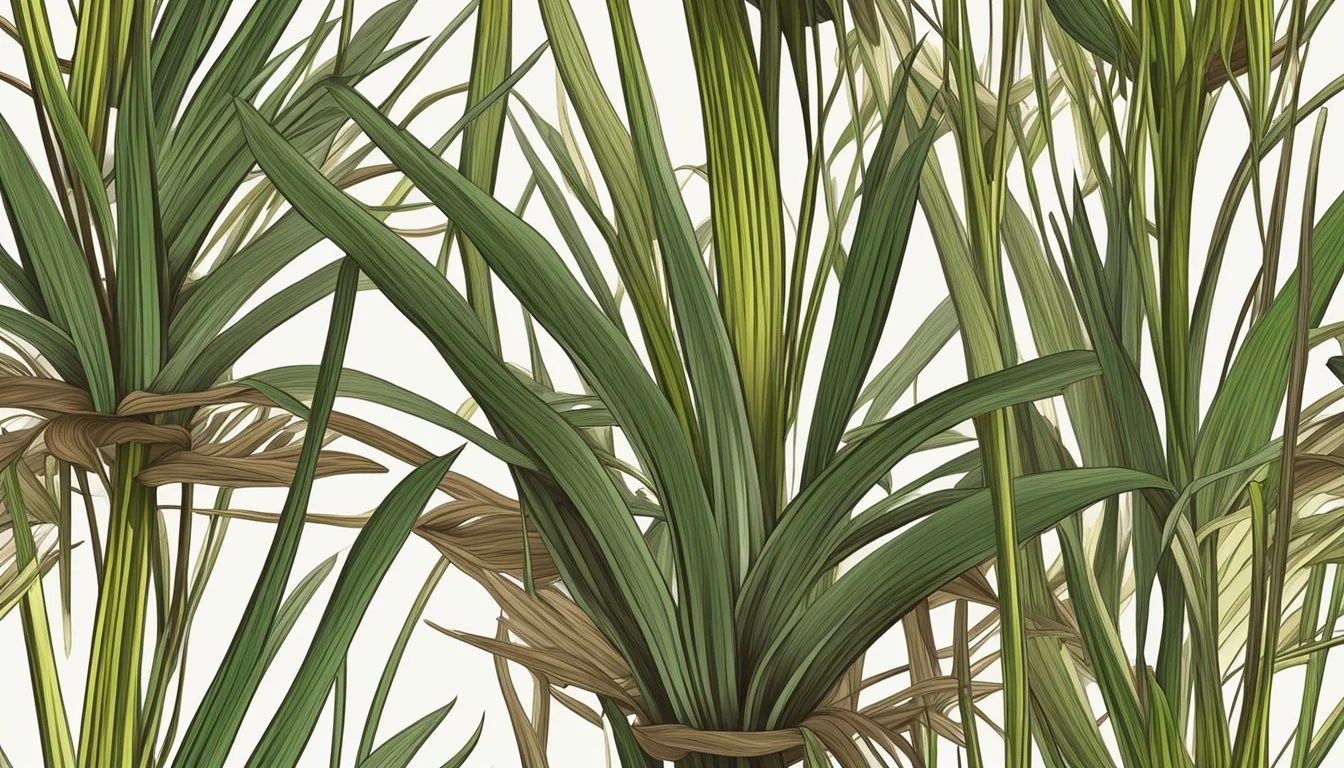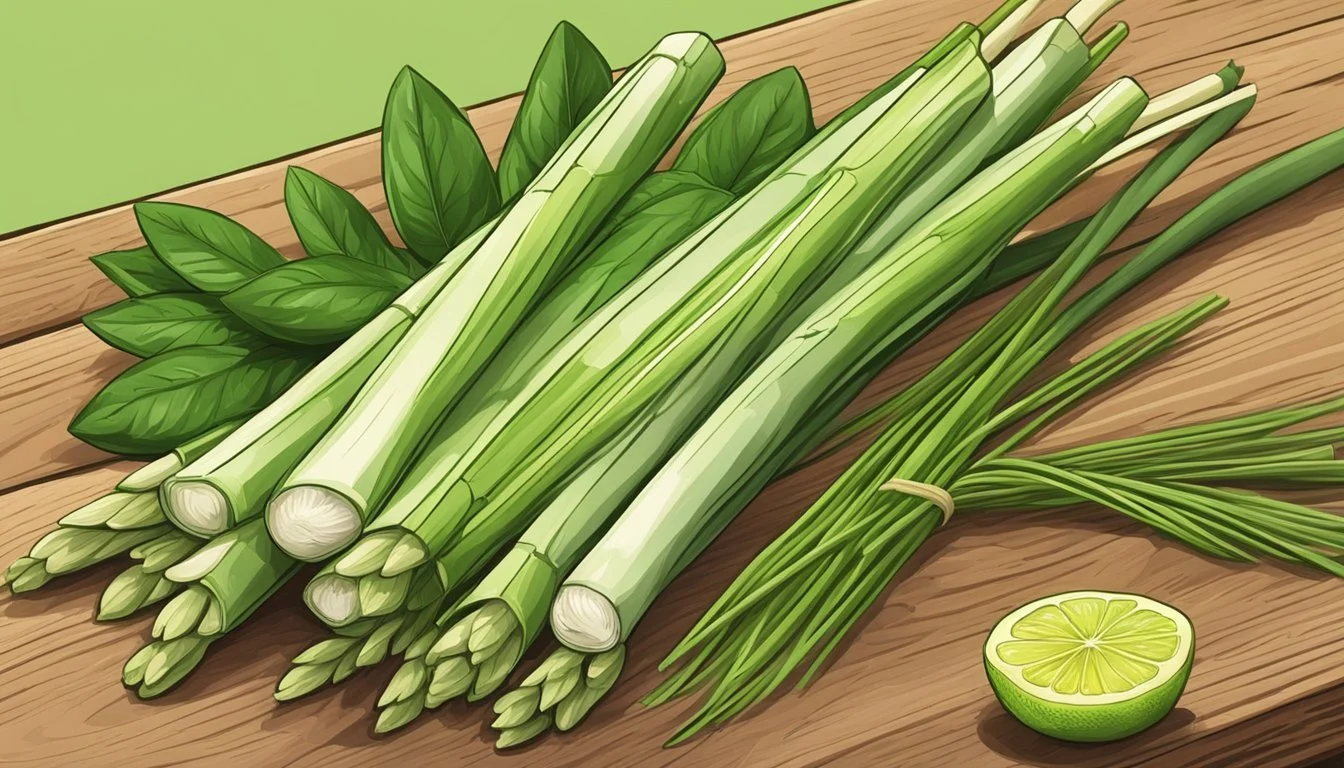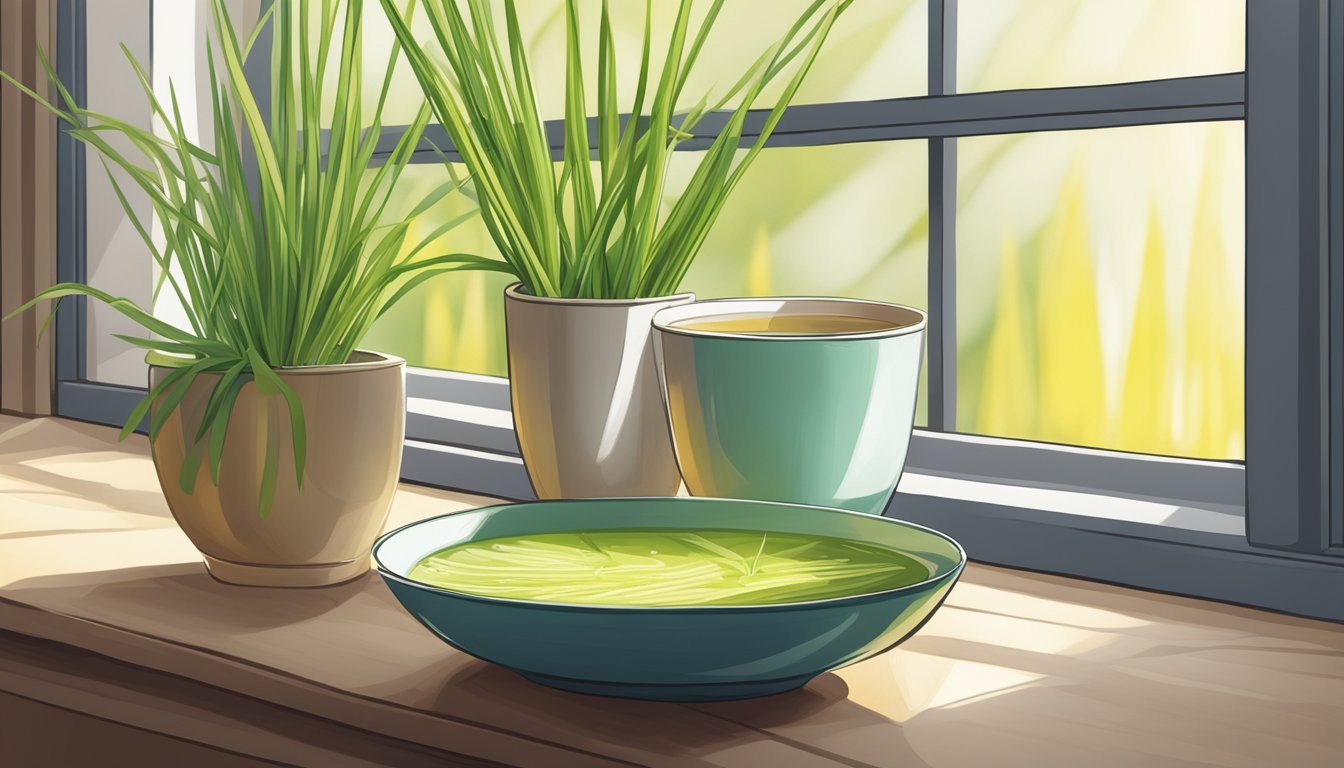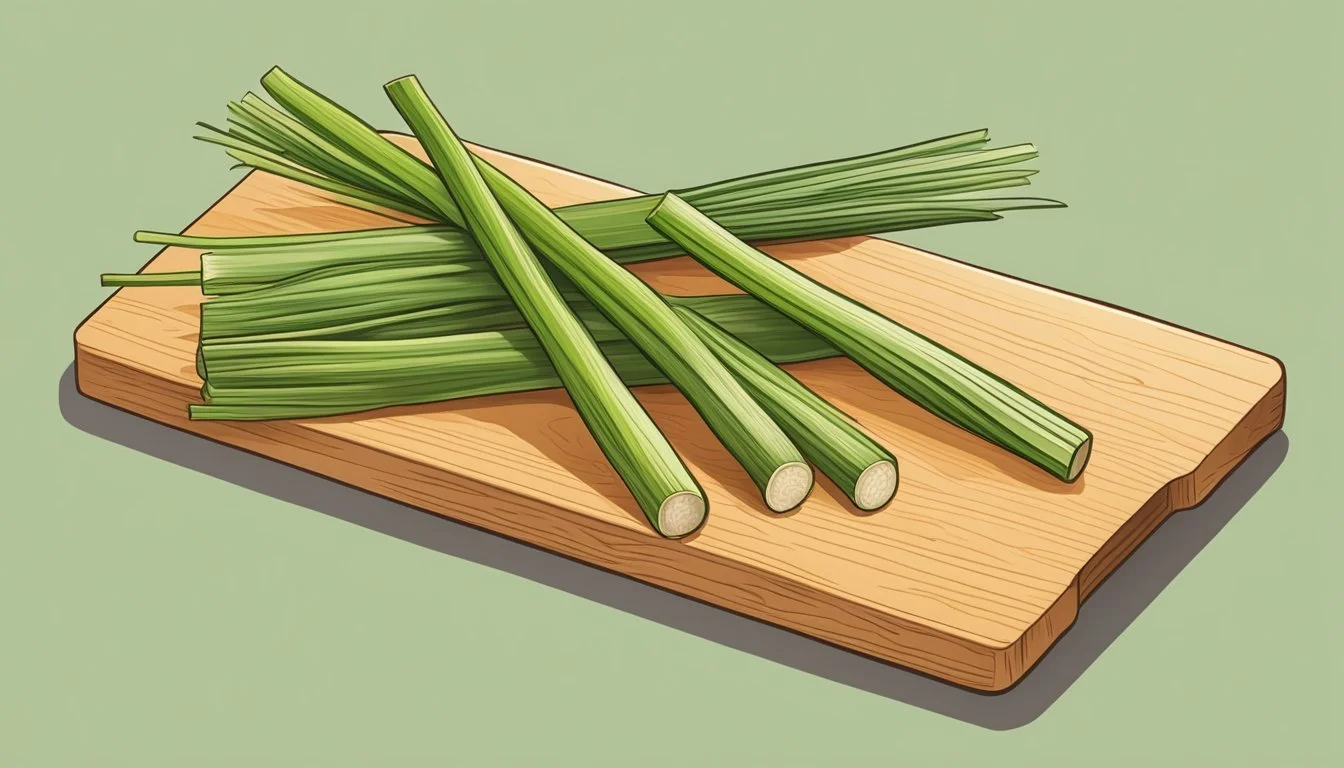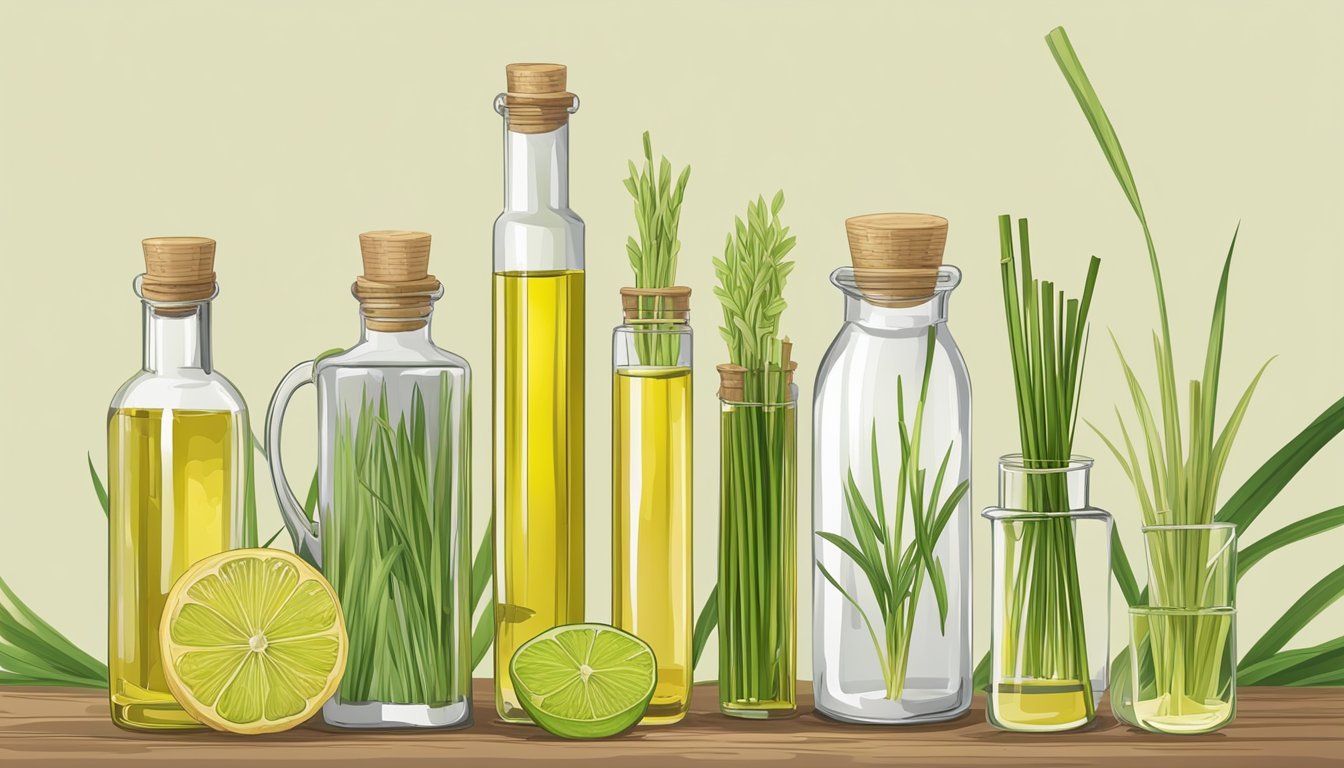Does Lemongrass Go Bad? Shelf Life, Signs, and Storage Tips
Lemongrass, known scientifically as Cymbopogon citratus, is a popular herb used in various culinary dishes and traditional remedies. While it's known for its refreshing citrus flavor and aroma, it’s also essential to know whether lemongrass can go bad. Yes, lemongrass does go bad if not stored properly. Fresh lemongrass typically lasts about 2 to 3 weeks in the refrigerator before it starts to deteriorate.
To extend its shelf life, many prefer to blend the stalks with a bit of water and freeze the mixture in ice cube trays. These frozen lemongrass cubes can last up to six months and are convenient for adding a burst of flavor to soups, stews, and curries. Always check for signs of spoilage, such as loss of green color, a foul smell, or a mushy texture, to ensure it's still safe to use.
Understanding how to store lemongrass properly can save you time and money while ensuring you always have this versatile herb at hand. Whether they're fresh or frozen, these tips will help keep your lemongrass in prime condition for all your culinary needs.
Understanding Lemongrass
Lemongrass is a versatile plant known for its citrusy flavor and aromatic properties. It is widely used in culinary applications such as teas, soups, and various Asian dishes.
Botanical Profile
Lemongrass (Cymbopogon) is a perennial grass native to tropical regions of Asia. It has long, thin leaves that can grow up to three feet tall. There are several species, but the most commonly used in cooking are Cymbopogon citratus and Cymbopogon flexuosus.
The plant's stalks are the most commonly used part in cooking, known for their lemon-like aroma and flavor. These stalks contain essential oils, including citral and geraniol. These compounds give lemongrass its distinctive scent and therapeutic properties.
Culinary Uses
Lemongrass is a staple in Thai cuisine and other Asian cooking. It is used in soups, teas, salads, and various savory dishes. Its citrus flavor can complement chicken, fish, and seafood recipes.
The outer leaves are often removed and the inner stalk is minced or crushed. Fresh lemongrass can be used to make a fragrant tea, while dried or powdered forms are available for different recipes. Lemongrass pairs well with ginger, garlic, and chili, enhancing the flavor profile of many savory dishes.
In summary, lemongrass provides a lemon zest-like flavor that can brighten up a variety of culinary creations.
Health Benefits and Nutrition
Lemongrass offers numerous health benefits due to its rich composition of vitamins, minerals, and antioxidants. It is popular for its medicinal properties and nutritional value, making it a beneficial addition to the diet.
Medicinal Properties
Lemongrass is renowned for its wide-ranging medicinal properties. It contains antioxidants, which help protect cells from damage caused by free radicals. The citral component in lemongrass is known for anti-inflammatory and antibacterial effects, making it effective against infections.
The herb is also beneficial in managing cholesterol levels and high blood pressure. Consuming lemongrass tea can lower blood pressure and improve blood circulation.
Lemongrass may alleviate digestive issues such as stomach cramps, nausea, and diarrhea. It has antifungal properties, useful in treating various fungal infections. Additionally, its ability to combat fever and headaches makes it a versatile medicinal herb.
Nutritional Composition
Lemongrass is rich in several essential nutrients. It provides a good amount of vitamins A, B, and C, which are vital for immune function, tissue repair, and cellular growth.
Here is a breakdown of some key nutrients found in lemongrass:
Calories: Low, typically around 5 per tablespoon.
Fiber: Provides dietary fiber which aids digestion.
Minerals: Contains iron, calcium, magnesium, manganese, potassium, and zinc.
One cup of raw lemongrass contains approximately 47 grams of water, aiding in hydration. Additionally, it supplies a modest amount of protein and carbohydrates. This nutritional profile supports various bodily functions and helps maintain overall health.
Storing Lemongrass
Proper storage can significantly extend the shelf life of lemongrass, whether kept fresh, dried, or frozen. Knowing the right method ensures you retain its flavor and aroma for your culinary needs.
Short-Term Storage
Fresh lemongrass, when stored correctly, can last up to two weeks in the refrigerator. It is advisable to wrap the stalks in plastic wrap or parchment paper to keep them from drying out. Alternatively, wrapping the stalks in damp paper towels before placing them in a plastic bag helps maintain freshness. Storing them in the fridge at temperatures between 32°F and 40°F ensures prolonged usability.
Another tip is to avoid keeping fresh lemongrass in the same area as ethylene-producing fruits like apples and bananas, which can accelerate spoilage. Keeping them in a designated crisper drawer further minimizes the risk of wilting.
Long-Term Storage Options
For long-term storage, freezing is highly effective. Lemongrass Paste: Blend fresh lemongrass stalks with a little water to form a paste. Freeze the paste into ice cube trays and store the cubes in a plastic bag for up to six months. Whole Stalks: Another option is to freeze whole lemongrass stalks. Place them in a freezer-safe bag and store them for months.
Drying is another excellent long-term storage method. Hang bundles of lemongrass upside down in a dry, dark place like a pantry. Once dried, typically after 1-2 weeks, store in an airtight container away from sunlight and moisture. Dried lemongrass retains its flavor for several months.
Signs of Degradation
Recognizing the signs of degradation is crucial for ensuring lemongrass quality. Common indicators include wilting, discoloration, and a loss of aroma. Fresh lemongrass should be firm and have a strong citrus scent. If it appears rusted or has mold spots, it’s best to discard it.
For dried lemongrass, signs like brittleness or a stale odor indicate it's no longer suitable for use. Frozen lemongrass should be free from freezer burn, which can be identified by ice crystals forming on the stalks. Regular checks can help in maintaining the herb's quality through its shelf life.
Preparation and Usage
Lemongrass is a versatile ingredient that enhances a variety of dishes with its distinctive citrusy flavor. Proper preparation and thoughtful incorporation into recipes are essential for making the most out of this aromatic plant.
Preparing for Cooking
To prepare lemongrass, start by trimming the stalks. Cut off the bulb and remove about 2 inches from the bottom. Peel away the tough outer leaves to reveal the inner stalk, which is more tender and flavorful.
Use a sharp knife or mortar and pestle to crush the stalk, as this helps release the essential oils. For dishes that require a more delicate application, the stalks can be sliced thinly or chopped.
Some cooks prefer to soak the lemongrass in boiling water for a minute before placing it in ice water to make it easier to handle. This step also helps in cutting and peeling the stalks efficiently. If not using the lemongrass immediately, it can be frozen for longer storage.
Incorporating Into Recipes
Lemongrass can be used in a variety of dishes and beverages. For soups and curries, it can be added whole or chopped for a subtle infusion of flavor. When making lemongrass tea, steep the chopped or bruised stalks in boiling water for several minutes.
In stir-fries and marinades, finely chopped lemongrass acts as a flavorful seasoning that complements meats, seafood, and vegetables. It's also commonly used in desserts to add a unique and refreshing twist.
For those looking to dry lemongrass, simply hang bundles in a dry, dark space until they are brittle. Once dried, store them in an airtight container for future use in teas or as a seasoning in various recipes.
Growing and Harvesting
Lemongrass (Cymbopogon citratus) thrives in warm, sunny locations with well-draining soil rich in organic matter. Proper cultivation and timely harvesting are crucial to ensure a healthy, productive plant.
Cultivation Tips
To successfully cultivate lemongrass, choose a sunny spot that receives at least 6-8 hours of sunlight daily. The soil should be moist but well-draining and high in organic content. Adding compost before planting helps improve soil quality.
Transplant lemongrass seedlings 2 feet apart to allow room for growth. Mulching around the base helps retain moisture and suppress weeds. Lemongrass prefers tropical conditions and does not tolerate drying out, making regular watering essential.
In colder climates, consider harvesting before winter or bringing pots indoors, as lemongrass does not survive freezing temperatures and goes dormant during winter.
Harvesting and Post-Harvest
Harvest lemongrass by cutting the stalks at the base or snapping them off near the bottom. Focus on older, thicker stalks as they are more flavorful and aromatic. For continual use, harvest small amounts from the outer edges of the clump.
Indoor plants can be harvested year-round. Ensure clean, sharp tools to avoid damaging the plant. Always wear gloves to protect hands from the sharp leaf edges.
After harvesting, store lemongrass in a cool, dry place. Fresh lemongrass can be kept in the refrigerator wrapped in a damp paper towel or plastic bag for a few weeks. For longer storage, consider freezing or drying the stalks and leaves.
Alternative Uses
Lemongrass, beyond its culinary applications, offers a range of uses including essential oils, skincare, and household items.
Lemongrass in Non-Culinary Contexts
Essential Oils and Extracts
Lemongrass essential oil is popular for its refreshing and citrusy scent. It is often used in aromatherapy to promote relaxation. Additionally, lemongrass extract can be found in various personal care products such as soaps and lotions, credited with its antimicrobial properties.
Candles
Lemongrass oil is a common ingredient in candles, providing a clean, invigorating aroma that can help repel insects. These candles are especially useful during outdoor activities, enhancing both ambiance and functionality.
Skincare
For inflammatory skin conditions, lemongrass extract is reputed to offer soothing benefits. Its anti-inflammatory properties help in reducing redness and swelling, making it a popular ingredient in natural skincare products.
Potential Side Effects
Lemongrass, while beneficial, may have side effects. Some individuals may experience reactions such as skin irritation or dizziness. Proper dosage and usage are essential to avoid these potential issues.
When to Avoid Lemongrass
Individuals with Allergies: Those allergic to lemongrass or related plants should avoid it. Allergic reactions can cause rash, hives, and swelling.
Pregnant Women: It’s advised for pregnant women to avoid large amounts of lemongrass. Some compounds may affect pregnancy.
Kidney function: In cases of kidney issues, excessive lemongrass may exacerbate problems. Consulting a healthcare provider is recommended.
Topical Use: Applying lemongrass oil on the skin can lead to irritation, redness, or burning. Always dilute essential oils before application.
Cultural Significance
Lemongrass holds a revered place in various cultures for both its symbolic and practical uses. It plays an important role in rituals, ceremonies, and culinary traditions across different regions.
Lemongrass in Global Traditions
In South India and Sri Lanka, lemongrass is often used in traditional medicine and rituals. It symbolizes cleanliness and purity, making it a staple in cultural ceremonies.
In Thailand, lemongrass is integral to Thai cuisine, enhancing the flavor of dishes like Tom Yum soup. It also features prominently in traditional healing practices, where its anti-inflammatory properties are valued.
Asian cooking often utilizes lemongrass to impart a citrusy flavor to dishes. Beyond culinary use, it holds a place in folklore and rituals, believed to ward off evil spirits and bring good health.

